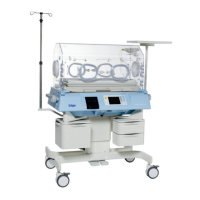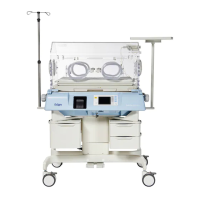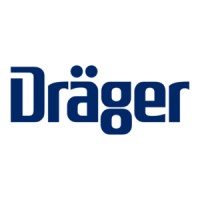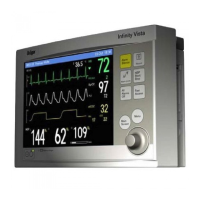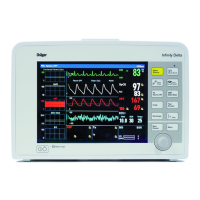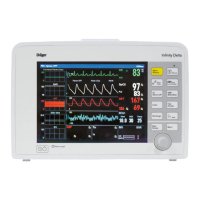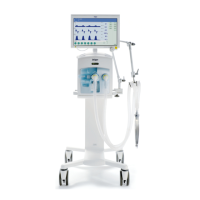Theory of Operation
Chapter 3: Theory of Operation
Isolette® Infant Incubator (Model C2000) Service Manual Page 3 - 21
3
Expansion Devices
The digital multiplexer, U3, allows additional digital signals for processor
control. It is a dual, 4-to-1 multiplexer that allows the microcontroller to
use two ports for 8-bits of information. The signals, DVSEL0 and
DVSEL1, control U18.
The buffered line-drivers, U13A/B and U14A, are used for signals that
are going off-board, namely SMDATA, SCDATA, and SCCLK. The
SMDATA line is used as a bi-directional line that can change from input
or output “on-the-fly” for data communication to the main controller. The
SCDATA is similar, with connection to the scale at connector J3.
SCCLK is the buffered clock line used for scale communications.
Buffer U14B provides an inversion for TM1SEL, producing TM2SEL to
alternately enable and disable the temperature multiplexers.
Analog/Digital (A/D) Conversions
The A/D converter, U11, is an eight-channel, 12-bit, serial, interface
device. Control for the channels is software-configurable by the serial
communication line SSPCLK, ADCDIN, and COMOUT. The signal,
ACENI, enables the A/D converter for signal processing and is asserted
twice every 21 milliseconds; the A/D converter is read twice. In addition,
the ADCIN and COMOUT are driven at 21 millisecond intervals. The
SSPCLK is shared with the EEPROM on the sensor board and scale
clock; therefore, the timing is not periodic.
All temperature information appears as a multiplexed signal on Channel
0, and oxygen information appears as a multiplexed signal on Channel
2. Channel 4 enables the A/D converter to read its maximum input, and
Channel 5 enables the A/D converter to read its minimum input to
determine proper A/D functioning.
The analog representation of fan pulses apply to Channel 6.
Controller
The controller accepts input voltages between the range of 90V AC and
264V AC through a universal input switching power supply. Voltages
above the safe operating range are clamped using a transorb diode.
The controller accepts input frequencies between the range of 48 Hz to
62 Hz through a universal input switching power supply.
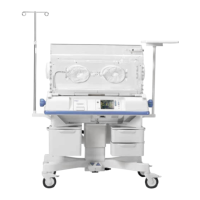
